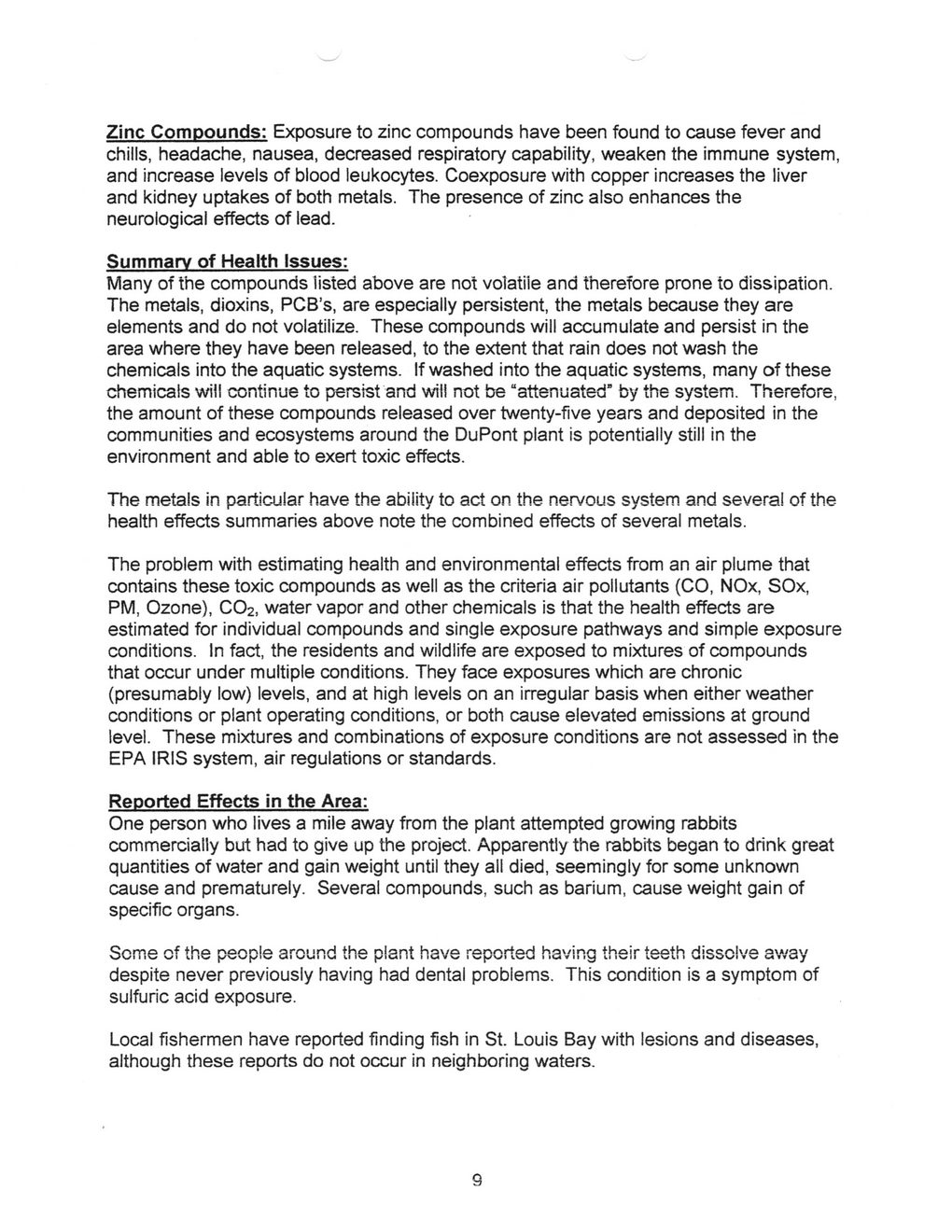This text was obtained via automated optical character recognition.
It has not been edited and may therefore contain several errors.
Zinc Compounds: Exposure to zinc compounds have been found to cause fever and chills, headache, nausea, decreased respiratory capability, weaken the immune system, and increase levels of blood leukocytes. Coexposure with copper increases the liver and kidney uptakes of both metals. The presence of zinc also enhances the neurological effects of lead. Summary of Health Issues: Many of the compounds listed above are not volatile and therefore prone to dissipation. The metals, dioxins, PCB’s, are especially persistent, the metals because they are elements and do not volatilize. These compounds will accumulate and persist in the area where they have been released, to the extent that rain does not wash the chemicals into the aquatic systems. If washed into the aquatic systems, many of these chemicals will continue to persist and will not be “attenuated” by the system. Therefore, the amount of these compounds released over twenty-five years and deposited in the communities and ecosystems around the DuPont plant is potentially still in the environment and able to exert toxic effects. The metals in particular have the ability to act on the nervous system and several of the health effects summaries above note the combined effects of several metals. The problem with estimating health and environmental effects from an air plume that contains these toxic compounds as well as the criteria air pollutants (CO, NOx, SOx, PM, Ozone), C02, water vapor and other chemicals is that the health effects are estimated for individual compounds and single exposure pathways and simple exposure conditions. In fact, the residents and wildlife are exposed to mixtures of compounds that occur under multiple conditions. They face exposures which are chronic (presumably low) levels, and at high levels on an irregular basis when either weather conditions or plant operating conditions, or both cause elevated emissions at ground level. These mixtures and combinations of exposure conditions are not assessed in the EPA IRIS system, air regulations or standards. Reported Effects in the Area: One person who lives a mile away from the plant attempted growing rabbits commercially but had to give up the project. Apparently the rabbits began to drink great quantities of water and gain weight until they all died, seemingly for some unknown cause and prematurely. Several compounds, such as barium, cause weight gain of specific organs. Qnmp qrm «r>H r»lan+ ho\/o ranorfaH Wowinr! +H^ir +CiO+h qu/qu Oviliv > LI iv7 CJi lV-4 VI i W I V I lUVV I ltu <r II 1^ 11 I i I N_l I Ovvi v Ut» W J despite never previously having had dental problems. This condition is a symptom of sulfuric acid exposure. Local fishermen have reported finding fish in St. Louis Bay with lesions and diseases, although these reports do not occur in neighboring waters. 9

Dupont Air Hearings Sierra-Club-Recommendations-(10)